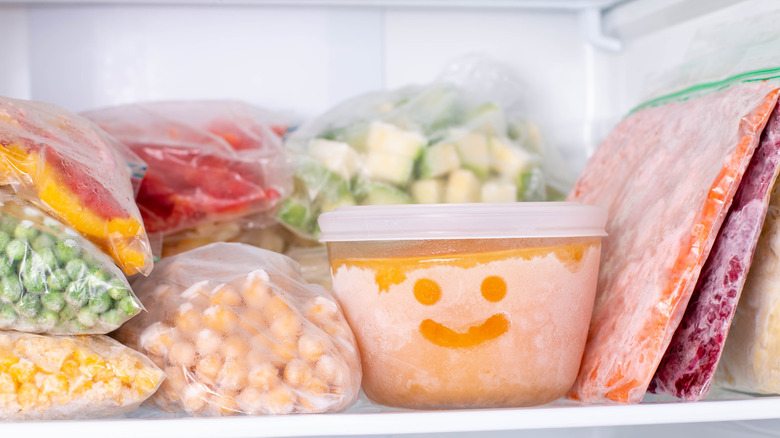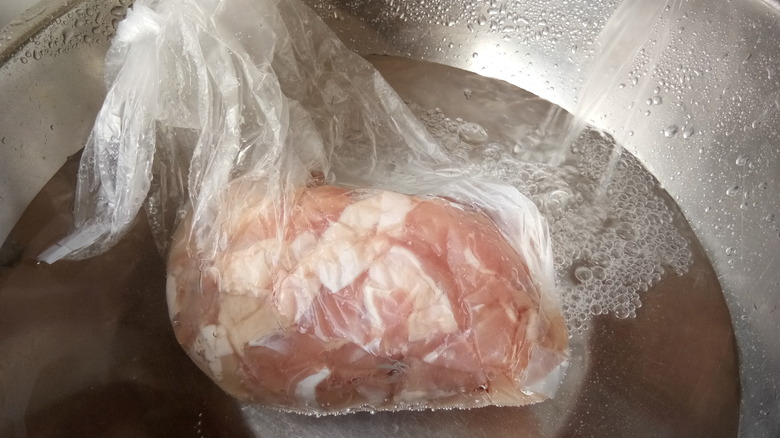Should You Thaw Frozen Food With Warm Water?
The freezer is a handy tool to keep food good for long periods of time. Where shelf-stable pantry staples save the day when you haven't made it to the grocery store in a week, the freezer can preserve a wide range of foods from soups to meat and fish to have on hand for a rainy day, even if it's months from now.
The most important consideration when taking food out of the freezer is how to properly and safely thaw it. The key to safe thawing is not letting the food enter "The Danger Zone," which refers to the temperature range where bacteria can grow on your food — between 40 and 140 degrees Fahrenheit, according to the USDA.
The USDA's four safe ways to thaw frozen food are refrigerator thawing, cold water thawing, microwave thawing, and cooking from frozen. These methods are ordered from most time-consuming to least, so you'll likely choose a method based on how much time you have — whether you're cooking that frozen steak tomorrow or need it for dinner in 2 hours.
To take a page out of a fairytale book, if Goldielocks was fielding advice from the three bears on how to thaw a steak, papa bear would take what The Kitchn calls the fastest, but riskiest route: the microwave. Mama bear would go for the trusty-but-slow method: defrosting in the fridge overnight. Thus, baby bear would go for cold water thawing because it's not too fast, not too slow, but just right (and safe). Here's why.
The Goldilocks method for thawing frozen food
According to America's Test Kitchen, "water conducts heat more efficiently than air," making it a faster alternative to thawing in the refrigerator — which can take up to 24 hours for every five pounds. The publication also emphasizes that it's "essential" to make sure you're using cold water, as this will help to ensure the food doesn't get too warm and enter The Danger Zone.
Place the sealed food — either in its original leak-proof packaging, or in a zip-lock bag — in a large bowl or container and fill it with cool water. If your food floats to the top, you can fill a smaller bowl with water and place it on top to weigh it down and keep it submerged. Keeping a trickle of water flowing over the food will help ensure the water stays at a constant temperature. Alternatively, instead of letting the tap run, you can change out the water every 30 minutes until thawed. Expect it to take about half an hour for each pound of food.
Following USDA food safety guidelines when thawing frozen foods can minimize the risk of bacteria growth and unpleasant foodborne illnesses. At the end of the day, no matter if you're Goldilocks or just a hungry person needing some dinner, warm water should never be used to thaw frozen foods.

